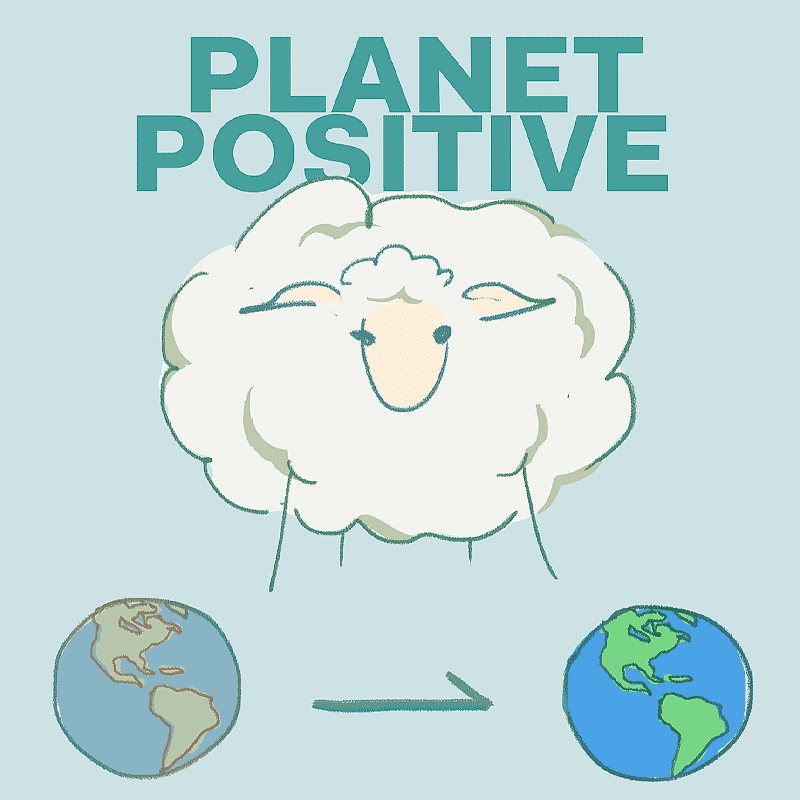WHY WOOL?
Sample Breeds of the American Northeast: 1. Baby Doll Southdowns; 2. Border Leicester; 3. Natural Colored (Border Leicester); 4. Gotland; 5. Alpaca; 6. Clun Forest; 7. Corriedale; 8. Hampshire; 9. Romney; 10. Icelandic; 11. Angora Goat; 12. Angora Rabbit; 13. Cotswold
WHY NORTHEASTERN AMERICAN WOOL?
BREED DIVERSITY
There are more than 30 different breeds of sheep raised in the American Northeast. Breed diversity is a check against pandemics.
Breeding for selected traits such as fine-micron fleece, desired for its softness, makes animals almost genetically identical.
Virus can spread easily from animal to animal because there are no genetic variants to stop it. Disease traveling through a flock or herd risks becoming even more virulent.
DURABILITY
Wool fiber can bend 20,000 times before breaking, extending your garment’s lifespan. When you wear your clothes longer you reduce their environmental impact.
Most wool garments today are made with fine micron Merino wool, a softer and much less durable wool.
Our Northeastern American wools range from medium to coarse micron diameters, making them longer lasting and warm.
Durability means less consumption, which means less demand on finite natural resources and fewer negative impacts from the manufacturing process, including greenhouse gas emissions and toxic effluent, and fewer discarded garments clogging landfills.
WHY FARM THE WAY WE FARM?
Powerful marketing touts the virtues of so-called sustainable fashion. Wool, for instance, is especially prized as a natural fiber that is both biodegradable and climate positive.
Wool shorn from sheep that openly graze benefits climate because grazing tears surface-level grasses, stimulating root growth underground, which draws atmospheric carbon through the grass down into the soil.
Soil is the planet's greatest terrestrial carbon reservoir.
Grain-fed sheep are not grazing, not promoting the atmosphere-to-soil carbon transfer.
All livestock emit methane, a greenhouse gas offset by grass-fed sheep with the carbon capture of open grazing.
90% of the global supply for fine apparel wool comes from Australia – a continent so ravaged by climate change-related drought that it is literally and tragically on fire. There is no grazing parched earth, now scorched.
Grass not grain makes wool climate positive.
Ask before you buy, “Grass or grain?”
THE IMPORTANCE OF LOCAL
ECONOMIES OF SCALE
Like most industries, fashion’s business model is an economy of scale. To keep the cost down for the consumer and still create profit for the company, money is made by accumulating a small profit per garment on high-volume sales.
This leads to extremely large-scale production of clothes that are cheaply priced – maximizing sales – because the cost of environmental degradation and greenhouse gas emissions created by these massive volumes is not counted.
Cheap prices make it too easy to overbuy and throwaway. Overproduction further contributes to excess and waste as many of these items go unsold and end up in landfills.
Seeking low labor costs and little to no environmental oversight, the supply chains of global fashion range the world, far from the market places of developed economies, requiring carbon-heavy transport.
It is difficult for consumers to know the impact of our purchases, causing us to unwittingly support practices that degrade environmental and worker well-being.
ECONOMIES OF VALUE
Economies of value optimize local resources. Economies of value accrue across the value chain. Local enterprise is investment in our communities, in jobs and in the stewardship of natural resources.
In 1960, 95% of the clothes Americans wore was made in America; today less than 3% is manufactured domestically.
We believe we can –and must– do better.
Local Wool Processing Visualization





